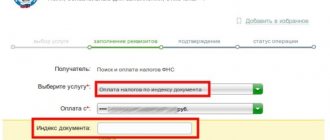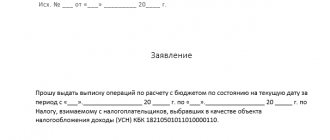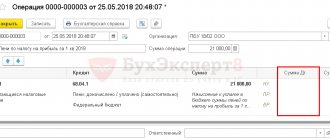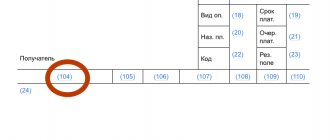January 22, 2021
Hello, dear readers of the KtoNaNovenkogo.ru blog. Living in a legal country means not only being protected by the state and having social guarantees, but also fulfilling obligations in relation to it.
This includes paying taxes. What they are, why they are needed, and how they are classified - we will talk about this in the article.
What is tax
Economic, social and political life in a certain area of territory, called a country, is regulated by the state. The performance of state functions within the specified framework requires financial support.
It is carried out from the state treasury, which consists of the budget (financial component) and state property. Filling the budget is mainly carried out by charging legal entities and individuals a special fee for all income they receive. These fees are called taxes.
Conclusion: taxes are a fee forcibly collected from legal entities and individuals, which is financial support for the functioning of the state.
Collection of taxes is an urgent need, the implementation of which is entrusted to the tax authorities.
The state tax system is a combination of the following components:
- the legislative framework regulating the collection of taxes;
- taxes directly;
- forms, methods and principles of establishing, collecting and adjusting;
- system of control over all stages of taxation.
The main document that regulates all relationships within the Russian tax system (calculation, payment of taxes, punishment for violations) is the Tax Code (TC) of the Russian Federation.
Terminology
To improve the understanding of the material, let’s consider the basic terms adopted in the tax field:
- A taxpayer is an individual or legal entity obligated by tax law to pay taxes. For example, you have an apartment owned by right of ownership. This automatically makes you a property taxpayer;
- Tax agent is an individual or legal entity who must calculate the amount of tax payments, withhold it from the taxpayer and transfer it to the budget of the appropriate level.
For example, if a citizen is employed, then his tax agent is the employer, he (or the enterprise’s accountant) calculates the tax, withholds it from the employee’s salary and transfers it to the budget; - The tax base is the amount of money or the monetary equivalent of the property owned on which tax must be paid.
It is calculated by multiplying the tax base by the tax rate. For example, gr. Ivanov rented out the apartment under a rental agreement for a year. The amount of income received is the tax base, and in our example, let’s say, it is 180 thousand rubles. Therefore, gr. Ivanov must pay personal income tax (NDFL) = 13% (approved rate) to the state treasury. The amount of payments will be 23,400 rubles; - An object of taxation is an object (sold service, goods, property, etc. in monetary terms) for which a fee must be paid to the treasury;
- The tax rate is the rate of tax deductions per unit of taxation. For example, for personal income tax a rate of 13% has been approved. This means that for the income received (D), an individual must pay tax (N), the amount of which is: N = D x 13%.
- Tax period is the time interval for which payments must be made on existing taxable objects. This period differs for different types of taxes (from a quarter to a year). Thus, property tax for individuals is calculated and paid once a year, and value added tax (VAT) - once a quarter.
Functions of taxes
In total, there are 4 functions included in tax levies, which are shown schematically in the figure below and are described in detail below.
The fiscal function of taxation is the main one. It has the main role of filling the state treasury with funds.
Fiscal means collecting information and transmitting it.
Tax authorities monitor taxpayers and impose sanctions on violators, thereby stimulating timely and full payment of taxes.
The distribution function is to divide the funds received from taxation of individuals and legal entities. Having entered the treasury, the money is allocated for various social and other government projects. Here is how state budget funds will be distributed in 2021:
*click on the picture to open it full size in a new window
The control and accounting function of taxation allows you to monitor and record the economic activities of individuals and legal entities, identify sources of income and expenses. In addition, reliable control prevents the criminalization of the economy.
The stimulating function of taxes is to support certain types of economic activities through the use of tax benefits. This applies to agriculture, small businesses, self-employed citizens (who is this?).
Blog about taxes by Vladimir Turov
Good afternoon, colleagues.
Today I will give you two documents that you will definitely need. The first document is needed by any accountant working for any individual entrepreneur in any taxation system or working in a large corporation with thousands of employees.
Order of the Federal Tax Service of Russia dated October 15, 2020 No. ED-7-11/ [email protected]
Starting from the 2021 billing period, calculations for insurance premiums are submitted by taxpayers to the tax authorities using an updated form in accordance with this order. The order is very long, but what can you do, accountants need it. Every accountant will need this order just after January 11. After all, as soon as the new year comes, we need new forms.
Letter of the Ministry of Finance of Russia dated December 18, 2020 No. 03-07-07/111669.
This letter clarifies the conditions for applying tax incentives for the IT industry. For example, you will learn the procedure for exempting from VAT transactions for the implementation of exclusive rights to computer programs and databases that are included in the corresponding unified register.
You will also find out what benefits are provided for income tax and insurance premiums. Therefore, if you have anything to do with the IT industry, then I sincerely congratulate you, because you have a lot of benefits. And God grant that 2021 be a victorious year in this regard.
About 2021 updates
For 2021, I, together with my specialists, have prepared a huge amount of new materials and developments that will help you not only survive this year, especially regarding VAT, but also not even notice all the tightening that the tax authorities have come up with. When I say “tightening”, if you haven’t watched my previous videos, you can now twist it again at your temple and say: “Turov is intimidating us again in order to drive us to his seminar”... Well, those who have watched my videos or been to my at the seminar, we have already become familiar with the new regulatory framework. They grab their heads.
It all started on January 11, and the main nightmare will begin after July 1, 2021. I have already told you several times what will happen there, but I won’t mention it now. Our calculations show that even if you start paying full VAT directly to the budget, without using any black and gray schemes, your total taxation will not change. And your costs, taking into account the costs of cashers, will be even lower. If you legalize your business in accordance with the methodology developed by me and my specialists, then as a result your tax costs will be less than if you worked “in the dark.” In 2021, working legally is much more profitable.
My key wish for 2021 is very simple: I want you, without causing unnecessary antagonism from the tax authorities and from law enforcement agencies, to look them in the eyes with dignity and pride and, smiling, say: “Hi, what are you doing with us?” forgot? Goodbye. We are already working legally. Good luck, gentlemen, tax authorities. And the fact that our total taxation is lower than that of others, even those who work illegally, sorry, that’s what happened. Where did you learn? We studied at the Law Firm "Turov and Partners". That's all.
Thank you and good luck in your business.
Link to documents:
Order of the Federal Tax Service of Russia dated October 15, 2020 No. ED-7-11/ [email protected]
Letter of the Ministry of Finance of Russia dated December 18, 2020 No. 03-07-07/111669
SIGN UP FOR A TAX SEMINAR
We are against cashing out and illegal tax reduction schemes.
We are for legal business and encourage all businessmen to work in accordance with the laws of the Russian Federation.
(Visited 1,656 times, 2 visits today)
Vladimir Turov
Head of legal practice, practicing and leading specialist in tax planning, building individual tax schemes and holdings, optimizing financial flows.
Types and classifications of taxes
Tax classification depends on the classification factor. Traditionally, they are divided according to the following criteria:
- by definition of the tax base: direct,
- indirect;
- chords,
- federal,
- progressive,
Next, let's analyze each type of tax in a little more detail.
Direct and indirect types of taxes
Direct taxes are those that are of an explicit nature, that is, levied directly on the individual or legal recipient of any income.
The amount of payment depends on the amount of income. The table below lists all types of direct taxes. They are set as a percentage of the tax base.
| Direct | Indirect |
| Customs duties |
| Excise taxes |
| Land tax | Value added tax (VAT) |
| Sales tax |
For example, personal income tax. persons in our country is 13%. Consequently, if the employer accrued a salary of 30 thousand rubles to his employee Ivanov, it means that he must pay 3900 rubles to the treasury for Ivanov. (this is 13% of 30 thousand).
Indirect taxes include taxes that are charged on goods and.
Example: furniture manufacturer IP Sidorov manufactured and offered a cabinet for sale. Taking into account all costs and expected profits, Sidorov set the price for his product at 10 thousand rubles.
But IP Sidorov is a “grated kalach” and knows that he will have to pay value added tax (VAT) to the treasury on the cost of the cabinet sold. From 2021, VAT is 20%. Therefore, Sidorov puts his closet up for sale not for 10 thousand, but for (10 thousand + 20%) = 12 thousand rubles.
Consequently, the buyer will pay 12 thousand rubles upon purchase, and thus become a tax payer (but not a tax agent!). The manufacturer (aka seller), IP Sidorov, will become a VAT tax agent after the sale of the cabinet (an intermediary between the buyer and the state treasury). Having received 12 thousand rubles at the cash desk, he is obliged to pay 2 of them in the form of VAT.
Brief description of taxes on OSNO
Undoubtedly, keeping records and submitting reports on a common system without the involvement of specialists is very problematic. In one article it is impossible to give a complete picture of this tax system or provide examples of tax calculation, as we did in articles devoted to special tax regimes. Each of the taxes mentioned above deserves separate consideration, especially VAT, but here we will only give a general understanding of the tax rates, reporting, payment and tax benefits for each tax.
Corporate income tax
The object of taxation here is profit, that is, the difference between the income received by the organization on OSNO and the expenses incurred. Income taken into account for income tax includes income from sales and non-operating income. A lot of disputes between businessmen and tax authorities are caused by confirmation of expenses that reduce the tax base. The more expenses can be confirmed, the less tax will be payable, so it is natural that the tax authorities assess the validity of expenses very meticulously. The Tax Code imposes two requirements on expenses declared by the taxpayer: economic justification and documentary evidence.
Economically justified expenses mean those expenses that were incurred to make a profit. Can expenses be considered justified if no profit was ultimately received? This issue has repeatedly become the subject of legal dispute, and at the highest levels. Quite often, the courts take the side of the taxpayer, defending the principle of freedom of entrepreneurial activity and giving the right to assess the effectiveness of the business to the taxpayer himself. And yet, one must be prepared for the fact that any expenses that the organization assessed as justified at OSNO may be challenged by the tax inspectorate.
The situation is also difficult with the issue of documentary evidence of expenses when calculating income tax. Supporting documents include the so-called primary documents (cash order, act, invoice, certificate, etc.), as well as invoices and contracts. Any inaccuracies or errors in filling out such documents may result in the tax office deeming the expenses undocumented.
The income tax rate is generally 20%. A preferential zero rate is provided for organizations in the field of education and medicine. In addition, the tax rate varies from 0% to 30% when taxing dividends received by an organization from participation in other organizations. All options for the tax rate for income tax are given in Art. 284 Tax Code of the Russian Federation.
Personal income tax
This tax is paid by individual entrepreneurs working for OSNO. Personal income tax can also be called a difficult tax to understand, because it is paid not only on income received from business activities, but also on the income of ordinary individuals. Tax rates for personal income tax vary from 9% to 35%, and each tax rate has its own procedure for determining the tax base.
If we talk about the tax on income from business activities of an individual, then in essence it is similar to the corporate income tax, but its rate is lower: not 20%, but only 13%. Starting from 2021, there is an additional personal income tax rate for income exceeding 5 million rubles, which is 15%.
Individual entrepreneurs on OSNO have the right to professional deductions, that is, to reduce the amount of income received from business activities by justified and confirmed expenses. If there are no supporting documents, then the amount of income can only be reduced by 20%.
Speaking about this tax, it is also worth mentioning the concept of a tax resident of the Russian Federation, because The personal income tax rate depends on this status. In order for an individual to be recognized as a tax resident in the reporting year, he must actually stay in Russia for at least 183 calendar days over the next 12 consecutive months. The income of non-residents is taxed at higher rates.
Property tax
There is a distinction between property tax for organizations and property tax for individuals, which includes individual entrepreneurs. From 2021, only real estate is recognized as the object of taxation under this tax; movable property is not taxed. If an individual entrepreneur on OSNO uses real estate belonging to him in his business activities, then he will pay property tax on a general basis, like an ordinary individual. Individual entrepreneurs under special tax regimes have the right to receive an exemption from paying this tax, subject to certain conditions. You can learn more about property taxes here.
Value added tax for individual entrepreneurs and organizations on OSNO
And finally, the most difficult tax to understand, report, pay and return is VAT. This tax is indirect, and as a result, its burden is borne by the end consumers of goods and services. VAT is charged on:
- sales of goods, works or services on the territory of the Russian Federation;
- free transfer of goods, works or services on the territory of the Russian Federation;
- transfer of property rights on the territory of the Russian Federation;
- performing construction and installation work for own consumption;
- transfer of goods, works or services for one’s own needs;
- import of goods.
The tax base for VAT is the cost of goods, works and services sold. The total tax amount can be reduced by the amount of tax deductions, that is, by the VAT presented by suppliers or paid at customs upon import. Tax rates for VAT can be 0%, 10%, 20%, in addition, there are also calculated rates in the form of 10/110 or 20/120.
According to Art. 145 of the Tax Code of the Russian Federation, organizations and individual entrepreneurs can be exempted from VAT payer obligations if in the three previous months the amount of revenue from the sale of goods (work, services) did not exceed two million rubles in total.
Accord and income taxes
Income taxes depend on the amount of income received. Earlier in the article, we looked at an example with personal income tax (what is it?).
Let's take another one: corporate income tax. The tax base in this case is income minus production and other costs, expenses for advertising, training, and research activities. The remaining amount of profit after deductions is subject to tax at a tariff rate of 20%.
A chord in music is the simultaneous sound of several sounds. Lump sum taxation assumes that the amount of payments does not depend on the size of the tax base. Figuratively speaking, these are several taxes, calculated on average and paid “in a chord” (at the same time).
An example in the Russian Federation is the unified tax on imputed income (UTII). Income is called imputed because it is not calculated each tax period individually for a specific tax agent, but is estimated, calculated for a specific type of activity. UTII is a special tax regime that replaces several payments.
What are business taxes?
It is better to choose a tax regime in advance and submit an application to switch to it immediately along with the application to open an individual entrepreneur. Here is our article on how to open an individual entrepreneur, it will help you figure it out.
If you do not submit an application to switch to a preferential tax regime, the Federal Tax Service will automatically install a general taxation system for you - the most difficult in terms of filing reports and expensive. But you are given another 30 days to choose a taxation system after the individual entrepreneur is registered for tax purposes - everything can be done in time.
There are six tax regimes for individual entrepreneurs: general, four special and a new one - tax on professional income. The entire tax payment scheme and the number of reports that will have to be submitted will depend on the tax regime. Below is a brief description of each tax regime; let us remind you that there are six in total.
OSNO or general taxation system
General taxation system. You need to pay personal income tax in the amount of 13%, property tax and value added tax - up to 20%. This regime was created for individual entrepreneurs with a turnover of 150 million rubles and more, as well as more than 100 employees on staff. Or, if your counterparties accept VAT for deduction, they are usually a legal entity. OSNO implies a lot of reporting that must be submitted to the Federal Tax Service, for this it is better to hire an accountant or at least outsource this work, otherwise all the time will be spent on accounting.
simplified taxation system or simplified taxation system
It exists in two forms: “income” with a tax rate of 6%, or in the “income minus expenses” option with a tax rate of 15% (may be lower in the regions). If the business requires almost no expenses, for example, the services of a tutor or stylist, then choose the “income” option and pay 6% tax.
If the business is costly and expenses are close to income, then it is more profitable to choose “income minus expenses”, then the tax will be 15% of the difference between them. There is only one declaration and is submitted once a year. This is one of the most popular taxation systems for individual entrepreneurs.
Patent tax system or PSN
Instead of taxes, an individual entrepreneur pays a fixed amount for a patent, which is issued for a period of 1 to 12 months. Suitable for patentable activities, or if the individual entrepreneur has more than 15 employees. The cost depends on the region and type of activity; you can find it out on the Federal Tax Service website, usually up to 6%. There is no need to submit a declaration at all.
Unified Agricultural Tax or Unified Agricultural Tax
As the name suggests, a tax for individual entrepreneurs engaged in agricultural activities. You only need to pay VAT and one tax at a rate of up to 6% of “income minus expenses”; in the regions the rate may be lower. The declaration is submitted once a year.
Single tax on imputed income or UTII
The rate depends on the region, usually ranging from 7 to 15%. But it does not apply to the real income of an individual entrepreneur, but to the one “imputed” to him by the state, which is assumed for a specific type of business. The types of business activities that allow the use of UTII are specified in clause 2 of Article 346.26 of the Tax Code of the Russian Federation.
But this tax regime ceases to apply from January 1, 2021. Now a bill has been submitted to the State Duma to extend the regime until 2024, but the Russian government does not support it.
Tax on professional income or self-employment
Ideal tax regime for individual entrepreneurs without employees. You only need to pay a tax of 4% on income received from individuals and 6% on income received from legal entities. There are no other taxes, insurance payments, or even reporting. If you can switch to this mode, go ahead. We wrote how to do this in the article “Becoming self-employed and maintaining an individual entrepreneur.”
You can read more about each tax regime directly on the Federal Tax Service website, where all the restrictions and nuances of working on: simplified tax system, PSN, UTII, Unified Agricultural Tax, and self-employment are indicated. For OSNO there are three pages: personal income tax, VAT and personal income tax for employees.
Federal, regional and local types of taxes
Let me remind you that the money paid by taxpayers is transferred to the state budget.
Its structure is subject to a strict hierarchy:
See how taxes are distributed among budgets of different levels:
There are also combined options. An example is corporate income tax. General interest rate = 20% (Article 284 of the Tax Code of the Russian Federation). 2% of the amount paid goes to the Federal budget, and 18% to the local budget.
Taxes 2017 for dummies. A short excursion.
Much has been written and said on this topic.
That's why we offer you a short “2021 Tax Summary” to help you cover the whole picture. The state has two news for you: good and “as usual.”
The good news is that there are tax breaks.
Oil tycoons who love to change currency and sell scrap metal will be in seventh heaven:
- now they will not have to pay a 2% tax on foreign exchange transactions;
- rent rates for oil production fell by half: from 45% to 29%;
- The tax on the delivery of scrap metal has been eliminated.
As you can see, these are very useful and necessary concessions.
The news “as usual” is the essence of our entire subsequent article.
Without going into heartbreaking details, we will briefly describe the situation using current interest rates as an example:
- Excise taxes:
- The excise tax on gasoline increased by 42 €/1000 l;
- Excise taxes on fortified and sparkling wines - by 12%;
- Excise taxes on other alcohol - by 20%;
- Excise tax on tobacco products is 40%.
- Rent rate:
- for the use of radio frequencies increased (including 500 times for 4G frequencies);
- for the use of subsoil (except for mining) - by 10%;
- for special use of water - by 10%;
- for special use of forest resources - by 10%.
- Pension innovations will affect everyone under 35 years of age. Now they will contribute 2% of their salary to an individual pension account.
- The special taxation regime in agriculture has been abolished by law (and not as in 2015) Subsidies from the budget will be allocated for agricultural activities, which, however, to a greater extent may not reach simple agricultural enterprises (as usual).
- Property tax. For extra square meters of real estate (more than 60 m²) in Kyiv, citizens will have to pay 1% of the minimum wage.
a little more detail on the taxation of enterprises. As you know, all enterprises can be taxed in two ways: on the general system and on the simplified one.
Here's a short diagram:
The simplified taxation system is considered more promising these days, although not everyone has the right to resort to it.
Thus, enterprises whose activities involve:
- organization and conduct of gambling;
- currency exchange;
- export, import, sale of excisable goods;
- mining, production, sale of precious metals;
- sales of minerals;
- financial intermediation;
- enterprise management activities;
- provision of postal and communication services;
- sale of art and antiques;
- organization of trades (auctions) for works of art;
- organizing and conducting tour events.
Let's look at the most interesting changes.
What's new in income tax?
Progressive, regressive and proportional taxes
In this type of classification (according to the ratio of the tax rate to the object of taxation), three types are distinguished, schematically shown and briefly described in the figure below:
Let's look at examples of how these types of taxes are calculated:
- Proportional view - the tariff rate is unchanged:
income (rub.) tax rate (%) tax amount (RUB) Tax to income ratio 10000 10 1000 0,1 20000 10 2000 0,1 30000 10 3000 0,1 Conclusion: the higher the income, the higher the tax amount. It is proportional to income. Example: personal income tax with a flat rate of 13% (except for winnings).
- Regressive type - the tax rate decreases as income increases:
income (rub.) tax rate (%) tax amount (RUB) Tax to income ratio 10000 15 1500 0,15 20000 12,5 2500 0,125 30000 10 3000 0,1 Conclusion: the higher the income, the lower the tax-to-income ratio. As an example, we can cite insurance contributions to the Pension Fund: 22% - if the tax base does not exceed 1,150,000 rubles, 10% must be paid if the specified amount is exceeded.
- Progressive type - the tax rate increases as income increases:
income (rub.) tax rate (%) tax amount (RUB) Tax to income ratio 10000 10 1000 0,1 20000 12,5 2500 0,125 30000 15 4500 0,15 Conclusion: the higher the income, the higher the tax amount. Moreover, the ratio of the amount of tax and income also increases (compare with the proportional principle of taxation).






